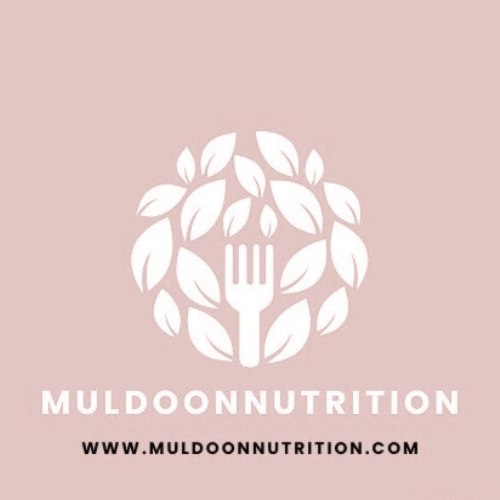Tart Cherry Juice….
You may have noticed those clear plastic bottles of red liquid or branded bottles handed to Tour de France riders on crossing the finish line. These have been widely reported to be Tart Cherry Juice. The use of nutritional supplements in sports has surged, with up to 87% of athletes reportedly consuming ergogenic aids (Ref). Intense exercise is linked to increased inflammation, as the body raises its production of free radicals aka Reactive Oxygen Species (ROS) in muscles. This process is associated with tissue damage and fatigue, which have been observed at higher levels following exercise (Ref). Polyphenol compounds have antioxidant and anti-inflammatory properties and may prevent inflammation and oxidative stress as well as help the athletes to recover from exercise-induced muscle damage. Fruits, including berries, provide essential nutrients and polyphenols that can support health and exercise performance. Although it’s not the high Vitamin C content — which is relatively low in Tart Cherries compared to Strawberries for example (3 mg vs. 57 mg per 100 g) — but rather their high concentration of anthocyanins, plant polyphenols responsible for the red pigmentation, that makes them particularly notable (Ref). Anthocyanin-rich fruits have been linked to improvements in resistance training (Ref) and cardiovascular function, such as increased stroke volume and lactate clearance (Ref). Tart Cherries (TC), especially the Montmorency variety, have notably higher phenolic content than sweet cherries, with anthocyanins concentrated in the skins, contributing to their potent antioxidant capacity (Ref).
Exercise-Induced Muscle Damage and Recovery
Exercise induces oxidative stress, inflammation, and reduced muscle force, which can impair recovery and performance. Strategies to enhance recovery are vital for athletes, and TC supplementation is thought to aid recovery by reducing muscle damage through its antioxidant and anti-inflammatory effects.
Mechanisms of Action
During exercise, muscles produce ROS, which in excess cause tissue damage, inflammation, and fatigue. While ROS also play a role in beneficial adaptations, managing their levels is important. Anthocyanins found in TC act as anti-inflammatory agents and work in a similar way to aspirin or ibuprofen, potentially benefiting strenuous muscle performances (Ref).
Impact of Tart Cherry on Different Exercise Modalities
Resistance Exercise
Some studies on resistance training show mixed results. A benefit was found when supplementation of TC reduced creatine kinase, a biomarker of muscle damage (Ref). However another study using a powered form of TC cherry reported reduced subjective muscle soreness and no significant changes in other variables compared to placebo (Ref).
Endurance Exercise
In endurance contexts, such as cycling, TC supplementation reduced oxidative stress biomarkers by up to 29% after intensive trials, simulating stage racing environments. Participants consumed 30ml of TC juice twice daily for seven days, showing promising antioxidant effects (Ref). However, a recent small study involving 12 recreational cyclists found that TC was less effective at improving performance compared to a high-glycaemic index sports drink (Ref).
Combined Exercise
Running is known to represent a combination of both mechanical and metabolic stress on the body. A study on Marathon running demonstrated that TC juice intake before and after a marathon accelerated recovery, reduced inflammation as measured by IL-6, and increased total antioxidant status by 10%, however C-reactive protein was unchanged which is a commonly used inflammation bio-marker (Ref).
A systematic review and meta-analysis involving over 300 young adults found small benefits of TC supplementation on delayed onset muscle soreness (DOMS), moderate benefits on power and muscle strength, and decreases in inflammatory markers. However, no significant effect was observed on CK levels. This review suggested TC may be more effective for metabolic exercises than mechanical ones (Ref).
Additional Potential Benefits
TC supplementation may be particularly beneficial in intense, multi-day race scenarios by blunting inflammatory responses and aiding recovery. TC also contains high levels of melatonin, which may improve sleep quality and thereby enhance recovery processes. For comparison, TC contains similarly high levels of melatonin as Strawberries (13.46 ng/g vs. 11.26 ng/g), but contains roughly 85 to 90 times more melatonin per gram than an Orange or an Apple, which contain only about 0.15 to 0.16 ng/g respectively (Ref).
Challenges and Considerations
The evidence on TC supplementation is mixed, likely due to variability in dosage, form, and exercise protocols across studies. Dosages range widely, from 30ml concentrated juice to 480mg freeze-dried powder, with supplementation periods typically spanning 7-10 days around exercise events. Some studies report no significant benefits, possibly due to insufficient anthocyanin content or small sample sizes. It’s important to remember like all nutrients (vitamins and minerals) the anthocyanin content can vary based on where and how it's grown, harvested, and stored. Factors include soil quality, climate, farming methods, ripeness at harvest, and post-harvest handling. Nutrients may degrade over time, especially with poor storage or processing. So, the same fruit can differ in nutrition depending on its origin and treatment. Furthermore, anthocyanins are unstable and degrade rapidly post-harvest. Freeze-drying preserves them but degradation of 62-75% can occur during storage (Ref). These factors complicate comparisons and interpretations of study outcomes.
Conclusion
Montmorency Tart Cherry supplementation shows potential as an ergogenic aid to reduce inflammation, oxidative stress, and muscle soreness, particularly in endurance and combined exercise modalities. Despite the evidence remaining inconclusive due to variability in study designs, dosages, and product quality; during the most demanding moments of a tough Tour de France stage, optimising nutrient intake is vital — and consuming liquids can significantly enhance absorption rates.
